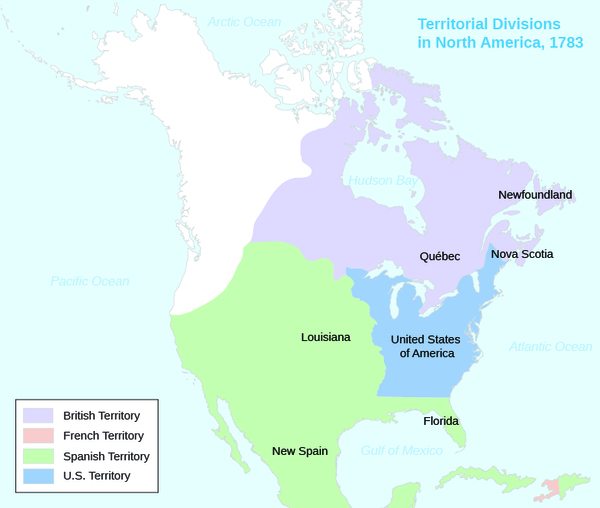| << Chapter < Page | Chapter >> Page > |

During the Revolution, a complex situation existed among Indians. Many villages remained neutral. Some native groups, such as the Delaware, split into factions, with some supporting the British while other Delaware maintained their neutrality. The Iroquois Confederacy, a longstanding alliance of tribes, also split up: the Mohawk, Cayuga, Onondaga, and Seneca fought on the British side, while the Oneida and Tuscarora supported the revolutionaries. Ohio River Valley tribes such as the Shawnee, Miami, and Mungo had been fighting for years against colonial expansion west; these groups supported the British. Some native peoples who had previously allied with the French hoped the conflict between the colonies and Great Britain might lead to French intervention and the return of French rule. Few Indians sided with the American revolutionaries, because almost all revolutionaries in the middle ground viewed them as an enemy to be destroyed. This racial hatred toward native peoples found expression in the American massacre of ninety-six Christian Delawares in 1782. Most of the dead were women and children.
After the war, the victorious Americans turned a deaf ear to Indian claims to what the revolutionaries saw as their hard-won land, and they moved aggressively to assert control over western New York and Pennsylvania. In response, Mohawk leader Joseph Brant helped to form the Western Confederacy, an alliance of native peoples who pledged to resist American intrusion into what was then called the Northwest. The Northwest Indian War (1785–1795) ended with the defeat of the Indians and their claims. Under the Treaty of Greenville (1795), the United States gained dominion over land in Ohio.
Prior to the Revolution, several colonies had official, tax-supported churches. After the Revolution, some questioned the validity of state-authorized churches; the limitation of public office-holding to those of a particular faith; and the payment of taxes to support churches. In other states, especially in New England where the older Puritan heritage cast a long shadow, religion and state remained intertwined.
During the colonial era in Virginia, the established church had been the Church of England, which did not tolerate Catholics, Baptists, or followers or other religions. In 1786, as a revolutionary response against the privileged status of the Church of England, Virginia’s lawmakers approved the Virginia Statute for Religious Freedom, which ended the Church of England’s hold and allowed religious liberty. Under the statute, no one could be forced to attend or support a specific church or be prosecuted for his or her beliefs.
Pennsylvania’s original constitution limited officeholders in the state legislature to those who professed a belief in both the Old and the New Testaments. This religious test prohibited Jews from holding that office, as the New Testament is not part of Jewish belief. In 1790, however, Pennsylvania removed this qualification from its constitution.
The New England states were slower to embrace freedom of religion. In the former Puritan colonies, the Congregational Church (established by seventeenth-century Puritans) remained the church of most inhabitants. Massachusetts, Connecticut, and New Hampshire all required the public support of Christian churches. Article III of the Massachusetts constitution blended the goal of republicanism with the goal of promoting Protestant Christianity. It reads:
As the happiness of a people, and the good order and preservation of civil government, essentially depend upon piety, religion and morality; and as these cannot be generally diffused through a community, but by the institution of the public worship of GOD, and of public instructions in piety, religion and morality: Therefore, to promote their happiness and to secure the good order and preservation of their government, the people of this Commonwealth have a right to invest their legislature with power to authorize and require, and the legislature shall, from time to time, authorize and require, the several towns, parishes, precincts, and other bodies-politic, or religious societies, to make suitable provision, at their own expense, for the institution of the public worship of GOD, and for the support and maintenance of public protestant teachers of piety, religion and morality, in all cases where such provision shall not be made voluntarily. . . .
And every denomination of Christians, demeaning themselves peaceably, and as good subjects of the Commonwealth, shall be equally under the protection of the law: And no subordination of any one sect or denomination to another shall ever be established by law.
Read more about religion and state governments at the Religion and the Founding of the American Republic exhibition page on the Library of Congress site. What was the meaning of the term “nursing fathers” of the church?
After the Revolution, the balance of power between women and men and between whites, blacks, and Indians remained largely unchanged. Yet revolutionary principles, including the call for universal equality in the Declaration of Independence, inspired and emboldened many. Abigail Adams and others pressed for greater rights for women, while the Pennsylvania Abolition Society and New York Manumission Society worked toward the abolition of slavery. Nonetheless, for blacks, women, and native peoples, the revolutionary ideals of equality fell far short of reality. In the new republic, full citizenship—including the right to vote—did not extend to nonwhites or to women.

Notification Switch
Would you like to follow the 'U.s. history' conversation and receive update notifications?